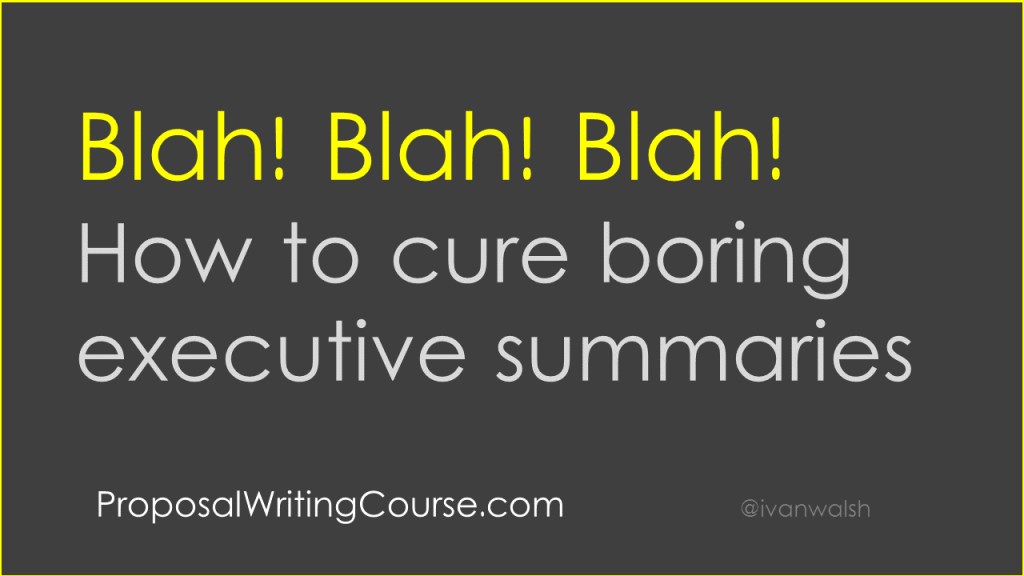I evaluate Business Proposals. I do this every week. In the last fifteen years, I’ve seen hundreds of business proposals ranging from the large Consultancies to one-man/women businesses. Part of evaluating a proposal is checking that the numbers add up but also to see if the project in question is worth investing in. How do we know that from a fifty page document? We don’t always know, of course. But, we can make certain deductions just by looking at the first ten pages. Or even the first five. To be honest, the Executive Summary is the first hurdle you need to master if you want to get investment. Let’s look at how to do it right.
Business Plan – Executive Summary
Executive Summary Checklist
Like we said above, first impressions count. For this reason, you need to pay special attention to the Executive Summary. If your clients or investors don’t get past the Executive Summary, then the rest of your document will go unread.
This also raises the question: Should you write your Executive Summary before or after you’ve written your Business Proposal? Some business writers prefer to do it first, others write it after the entire document is completed. I write it at the end as I want the complete text before me. That way, I can digest the document and write the Executive Summary based on what I’ve read.
The following is one suggested approach for an Executive Summary. Change this to suit your needs. In the Executive Summary, include the following:
Introduction
- Brief description of your product or service
- Identify when, where, and how the company was established
- Provide the current status, including funding, of your organization
Problem Definition
- What problem does the solution solve?
- How important is it to users over the next [x] years?
- What is the business and/or technical road map?
- Who are the customers and their needs?
Market Opportunity
- What is the market size?
- What is the timing of market development?
- What are the key market drivers?
- What are the inter-dependencies of this market to other markets, businesses or the government?
- What are the supply and distribution channels?
- Has the market been validated by a customer / partner?
- What is the marketing and sales strategy?
Competitive Analysis
- Who are your competitors?
- What are your advantages and the competitive products/services?
- What business models have been successful?
Management Team
- Who are the key management personnel? Cross-reference to Appendix if necessary.
- What is their track-record?
- How will you complete the management team if all the key members are not yet identified?
Technology
- How unique is the technology?
- Can any parts be patented?
- What is the current development status of product/service?
- How will the products be tested?
Financial Analysis
- Summarize projections for revenue, cost and return on investment
- Describe funding required to achieve the next milestones
Conclusions and final writing tips
While this looks like a lot of work, the key is to select the parts that you want to highlight in the Executive Summary and move the rest to the main document.
Most Executive Summaries are one to two pages max.
With this is mind, write the text and get all the information down first. Then revise the material and see where you can refine the wording to reduce the word count, for example, by merging points together and remove filler text. Also, look for phrases that can be pruned and made shorter. For example?
Instead of
In the event of
Write
If
Instead of
We have come to the conclusion that
Write
We decided
Instead of
The purpose of this document is to
Write
This document… (The purpose of is redundant)
Look for ways to remove these fillers. You’ll sharpen the prose in the process and give your document a nice, polished tone.
What have I missed?
About the Author: Ivan Walsh provides Business Tips for Smart People on Klariti.com. His also runs the popular Business Planning Blog at http://www.ivanwalsh.com. Follow him on Twitter at ivanwalsh.
PS: You can get the Business Plan Template from our partner Klariti.com here.

